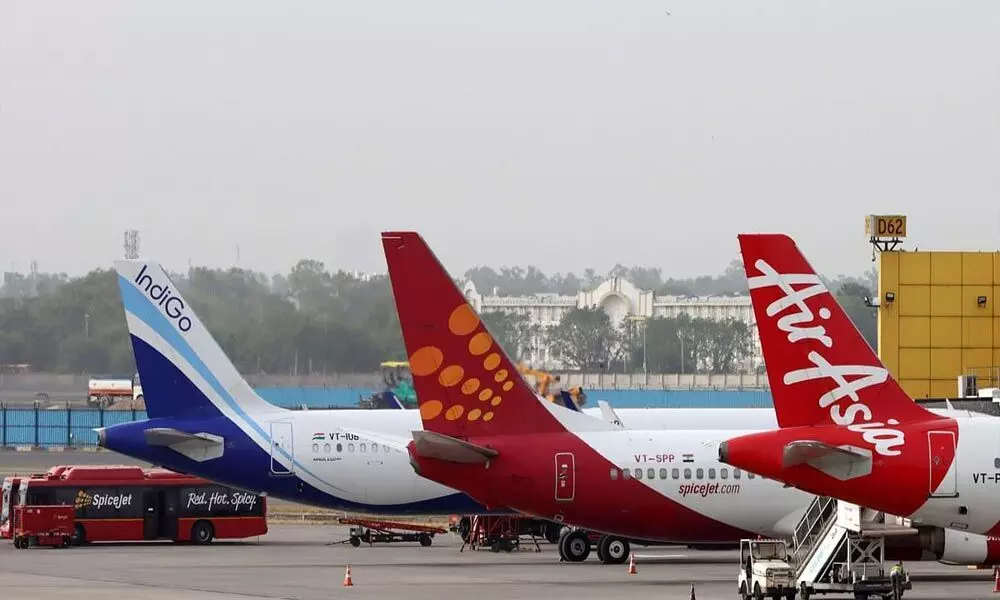Global air carriers getting ready to take off, but uncertain future lies ahead
Flights may be creeping toward pre-pandemic levels, but there’s still a China-sized hole in the global tourism market and a pile of debt to manage
image for illustrative purpose

The world's air carriers are preparing their cabins for take-off. After 18 months in which passenger planes were laid up in desert boneyards, converted into makeshift medical-supplies freighters, and even flown on short return hops just to maintain their pilots' certifications, the machinery of the global aviation industry is gradually creaking back into life.
Emirates, the biggest carrier by international traffic, is planning to hire 6,000 people over the coming six months and will have restored 70 per cent of its pre-pandemic capacity by the end of the year. London's Heathrow Airport Tuesday reported its first quarter of passenger growth since 2019. Sales from General Electric Co's business that makes and services jet engines climbed 9.7 per cent in the September quarter. On a tracker of more than 100,000 daily flights maintained by FlightRadar24, a data provider, weekly average flight departures last week briefly moved ahead of the same period in pre-Covid 2019.
It's hard to believe it, but the moment that airlines have been waiting for is finally arriving. The European Union largely opened itself up to vaccinated travellers last month, as did Canada and Turkey; India followed Oct. 15, and Thailand will begin a limited reopening Nov 1. The biggest change was announced Monday: From Nov. 8, the US, the biggest recipient of inbound tourist dollars and the second-biggest spender on outbound tourism, will join the club of nations largely open to vaccinated travellers. This may all seem a little premature at time when half of the world's population has still not been inoculated - but air travel, like vaccines, is a luxury good hogged by richer nations. More than a third of international passenger air traffic in normal times is within China, North America and Europe. China's domestic market has been mostly open since the first half of last year. Europe's main restrictions were removed last month, and North America's will follow in November. Add in transatlantic flights and those between Europe and the Middle East, where most restrictions have also fallen for the vaccinated, and you're looking at around 50 per cent of the global total.
That still leaves a giant China-sized hole in the global tourism market. Beijing is the only major national government still committed to a zero-Covid strategy, and it's showing little sign of letting up. Travellers must spend up to 21 days in quarantine, rising to more than a month from some parts of the world such as the United Arab Emirates. With Chinese outbound tourists having outlaid about $255 billion in 2019 - equivalent to about a fifth of all international spending - that represents a significant blow.
Similar measures apply in Hong Kong, where the government this week tightened up already-strict quarantine requirements in the hope the policy would encourage mainland China to open up the border. Flights between Hong Kong and Taipei - which have traditionally vied with Singapore-Kuala Lumpur for the title of world's busiest international air route - have plummeted virtually to nothing. Hong Kong recorded just 50 visitors from Taiwan in June, a month that normally sees more than 160,000 visitors.
Other parts of the Asia region are a mess of conflicting regulations. While the aviation hub of Singapore has largely opened itself to long-haul travel and is reported to be looking at lifting most border restrictions with Malaysia, for the most part a region that accounts for about 15 per cent of aviation traffic remains closed from New Zealand north to Japan.
At the same time, that's less of an issue than it may appear. Thanks to the limited range of aircraft and the difficulty of operating outside of home territory, the vast majority of airline revenue is local. The budget airlines that dominate short-haul travel have actually been running ahead of their pre-pandemic performance of late, with Ryanair Holdings Plc up 15 per cent since the start of 2020, India's InterGlobe Aviation Ltd. gaining 44 per cent and Mexico's Controladora Vuela Cia, or Volaris, jumping 77 per cent.
Airlines still face immense challenges. Net debt is up by more than a third since the end of 2019 among 124 carriers tracked by Bloomberg, to $402 billion. Paying that off will require exceptional operating earnings, at a time when carriers are having to keep a lid on prices to tempt travellers back on board. Jet fuel, which accounts for about a quarter of costs, is close to a seven-year high.
The worst period for the aviation sector may still be ahead of it, as the public and private lenders who've kept the industry afloat through the past two years seek to recover the money they've extended. Still, after a long and lonely pandemic, the welcoming landing lights of home are finally within sight. (Bloomberg)

